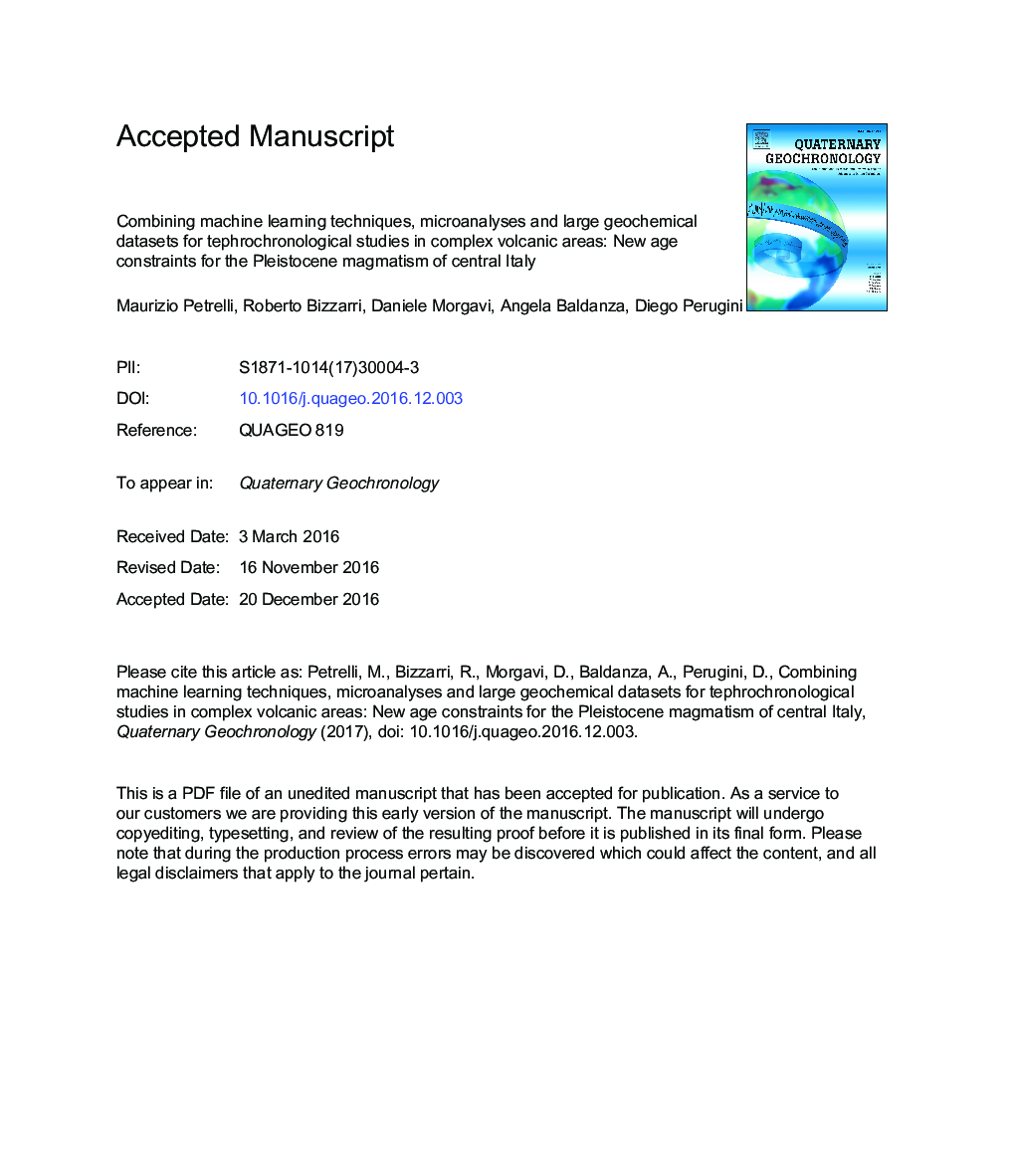| کد مقاله | کد نشریه | سال انتشار | مقاله انگلیسی | نسخه تمام متن |
|---|---|---|---|---|
| 5784976 | 1639836 | 2017 | 41 صفحه PDF | دانلود رایگان |
عنوان انگلیسی مقاله ISI
Combining machine learning techniques, microanalyses and large geochemical datasets for tephrochronological studies in complex volcanic areas: New age constraints for the Pleistocene magmatism of central Italy
ترجمه فارسی عنوان
ترکیبی از تکنیک های یادگیری ماشین، میکروکنترلها و مجموعه داده های ژئوشیمیایی بزرگ برای مطالعات تروفرونگوولوژیکی در مناطق پیچیده آتشفشانی: محدودیت های سن جدید برای ماگماتیسم پلیست اتن مرکزی ایتالیا
دانلود مقاله + سفارش ترجمه
دانلود مقاله ISI انگلیسی
رایگان برای ایرانیان
کلمات کلیدی
موضوعات مرتبط
مهندسی و علوم پایه
علوم زمین و سیارات
ژئوشیمی و پترولوژی
چکیده انگلیسی
Characterization, correlation and provenance determination of tephra samples in sedimentary sections (tephrochronological studies) are powerful tools for establishing ages of depositional events, volcanic eruptions, and tephra dispersion. Despite the large literature and the advancements in this research field, the univocal attribution of tephra deposits to specific volcanic sources remains too often elusive. In this contribution, we test the application of a machine learning technique named Support Vector Machine to attempt shedding new light upon tephra deposits related to one of the most complex and debated volcanic regions on Earth: the Pliocene-Pleistocene magmatism in Italy. The machine learning algorithm was trained using one of the most comprehensive global petrological databases (GEOROC); 17 chemical elements including major (SiO2, TiO2, Al2O3, Fe2O3T, CaO, MgO, MnO, Na2O, K2O, P2O5) and selected trace (Sr, Ba, Rb, Zr, Nb, La, Ce) elements were chosen as input parameters. We first show the ability of support vector machines in discriminating among different Pliocene-Pleistocene volcanic provinces in Italy and then apply the same methodology to determine the volcanic source of tephra samples occurring in the Caio outcrop, an Early Pleistocene sedimentary section located in Central Italy. Our results show that: 1) support vector machines can successfully resolve high-dimensional tephrochronological problems overcoming the intrinsic limitation of two- and three-dimensional discrimination diagrams; 2) support vector machines can discriminate among different volcanic provinces in complex magmatic regions; 3) in the specific case study, support vector machines indicate that the most probable source for the investigated tephra samples is the so-called Roman Magmatic Province. These results have strong geochronological and geodynamical implications suggesting new age constraints (1.4 Ma instead of 0.8 Ma) for the starting of the volcanic activity in the Roman Magmatic Province.
ناشر
Database: Elsevier - ScienceDirect (ساینس دایرکت)
Journal: Quaternary Geochronology - Volume 40, May 2017, Pages 33-44
Journal: Quaternary Geochronology - Volume 40, May 2017, Pages 33-44
نویسندگان
Maurizio Petrelli, Roberto Bizzarri, Daniele Morgavi, Angela Baldanza, Diego Perugini,
